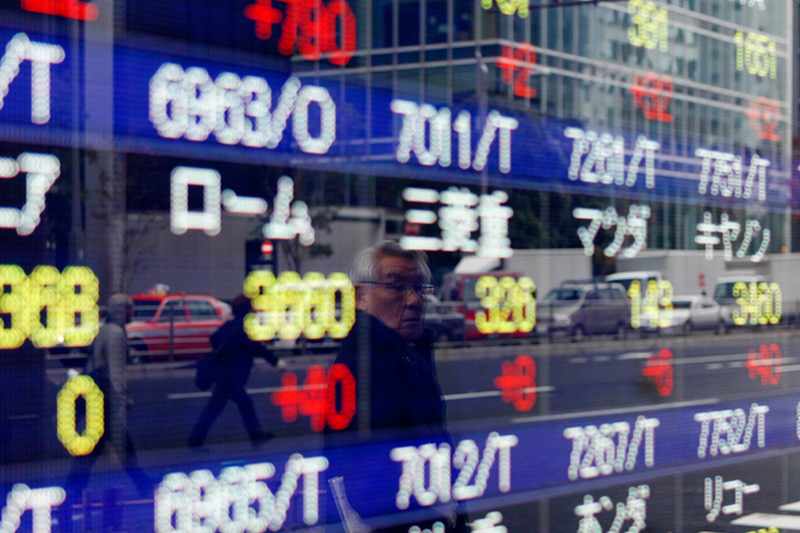Investing.com - Asian shares were mixed on Wednesday with Shanghai down after consumer inflation ticked higher than expected, throwing into doubt the scope for further easing.
Consumer prices in China rose at a faster pace than expected in February, setting the stage for a tighter corridor to ease monetary policy in the face of slowing growth.
In China CPI for February rose 1.6%, above the gain of 1.1% expected month-on-month for a year-on-year pace of 2.3%, well above the 1.9% seen.
That sent the Shanghai Composite Index down 1.20% to 2,828.06, while Hong Kong's Hang Seng Index was up 0.60% to
20,116.10.
The yuan was down against the dollar Thursday after the People's Bank of China set the fixing weaker for a second session at 6.5127 compared with 6.5106.
The Nikkei 225 rose 1.17% to 16,837.23 and the S&P/ASX 200 gained 0.16% to 5,165.30.
China producer price data fell 4.9% year-on-year as expected.
In Japan, CGPI data showed a 0.2% fall, less than the 0.3% drop seen in February month-on-month and a year-on-year decline of 3.4%, matching expectations.
Earlier, the Reserve Bank of New Zealand Thursday cut the official cash rate 25 basis points to 2.25%, and signaled further easing may be needed to ensure future inflation settles near the middle of the target range.
At the OCR review which was also accompanied by a full quarterly Monetary Policy Statement, the signaled more easing may be required with the 90-day bill track suggesting a projection of one more 25 basis points cut.
"Further policy easing may be required to ensure that future average inflation settles near the middle of the target range. We will continue to watch closely the emerging flow of economic data," the RBNZ said.
As well, the MI inflation expectations in Australia rose 3.4%, a dip down from 3.6%.
Overnight, U.S. stocks resumed their recent hot streak on Wednesday, one day after suffering a rare down session, as the major indices continued to move in lockstep with the recent rally in resurgent crude prices.
U.S. crude futures surged more than 4% on the session to eclipse $38 a barrel, remaining near their highest level on the calendar year. It came amid reports that motor gasoline inventories fell by 4.5 million barrels last week, providing indications that record-high U.S. stockpiles could be on the verge of leveling off. Investors also reacted to reports from Reuters that Saudi Arabia could be seeking loans in the range of $6 to $8 billion in an attempt to stave off a budget deficit that reached as high as $100 billion last year.
The report could signal that the kingdom may be willing to make added concessions in negotiations with OPEC and Non-OPEC producers on a pact that could help stabilize crude prices at $50 a barrel.
The Dow Jones Industrial Average gained 36.26 or 0.21% to 17,000.36, while the S&P 500 Composite index added 10.00 or 0.51% to 1,989.26, as both indices posted their sixth winning session over the last seven trading days. The NASDAQ Composite index, meanwhile, ticked up 25.55 or 0.55% to 4,674.38, amid a strong performance from semiconductor stocks. On the S&P 500, nine of 10 sectors closed in the green led by stocks in the Energy and Technology industries. Stocks in the Telecommunications sector, the lone industry to close in the red, lagged on Wednesday.
